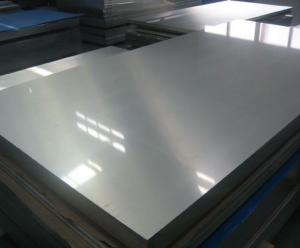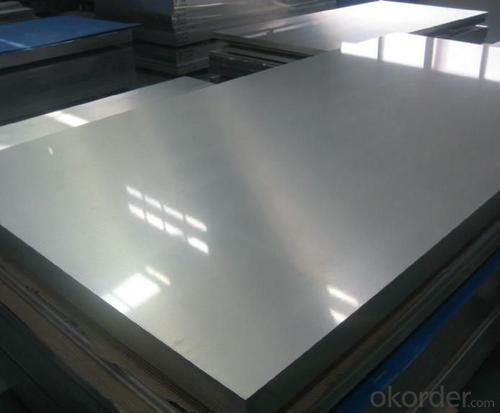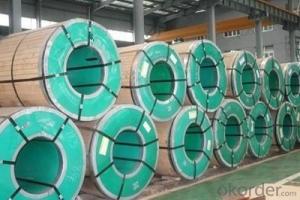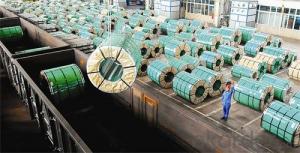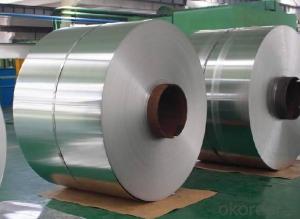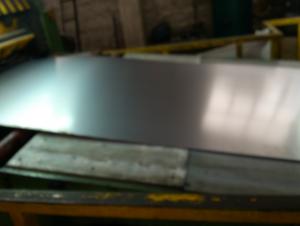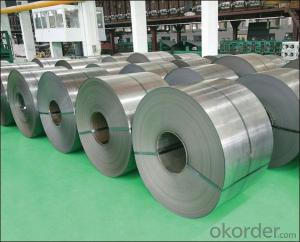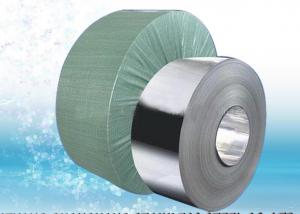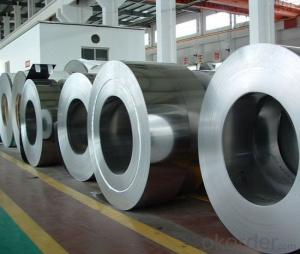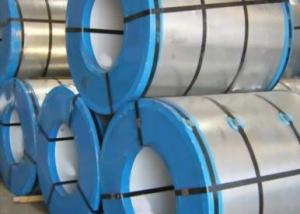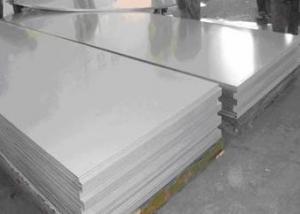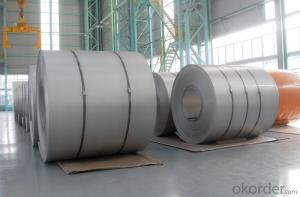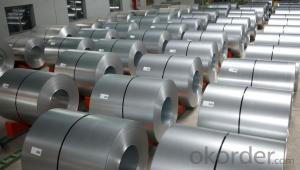AISI 201 Stainless Steel Plate
- Loading Port:
- China Main Port
- Payment Terms:
- TT or LC
- Min Order Qty:
- 1 Ton m.t.
- Supply Capability:
- 2000 Tons Per Month m.t./month
OKorder Service Pledge
OKorder Financial Service
You Might Also Like
AISI 201 Stainless Steel Sheet
1. Chemical composition of AISI 201 Stainless Steel Sheet
C | Si | Mn | P | S | Ni | Cr |
max0.15 | max1.00 | 5.50-7.50 | max0.06 | max0.03 | max1.00 | 16.00-18.00 |
2. Mechanical properties of AISI 201 Stainless Steel Sheet
Yield Strength | Tensile | Elongation | Hardness (HV) | Hardness (HRB) |
245 | 640 | 40 | 253 | 100 |
3. Standard of AISI 201 Stainless Steel Sheet: AISI, ASTM, GB, EN, DIN, JIS
4. Surface of AISI 201 Stainless Steel Sheet: 2B, NO.1, BA, NO.4, Hairline, SB, Mirror finish, Anti-skid, Cherkered etc.
5. Size of AISI 201 Stainless Steel Sheet:
Thickness: 0.3-3mm (cold rolled), 3-40mm (hot rolled)
Width: 1000mm or 1219mm or 1240mm for cold rolled, 1500mm for hot rolled.
Length: As customers' request.
6. MOQof AISI 201 Stainless Steel Sheet: 1 Ton
7. Payment terms of AISI 201 Stainless Steel Sheet:T/T or L/C
8. Packing of AISI 201 Stainless Steel Sheet: Seaworthy package with wooden or Iron pallets with the paper and the steel strip,
or as customers' request.
9. Delivery time of AISI 201 Stainless Steel Sheet: Usually about 7 days after we confirming the order, or according to your quantity.
If you have any question or demand, pls feel free to contact me.
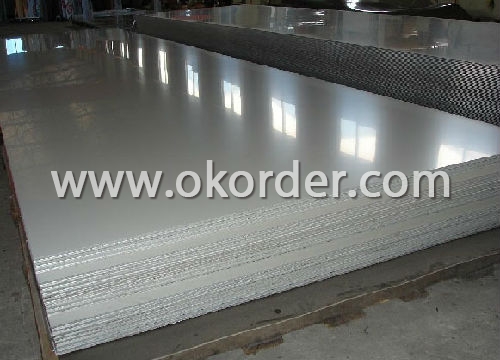
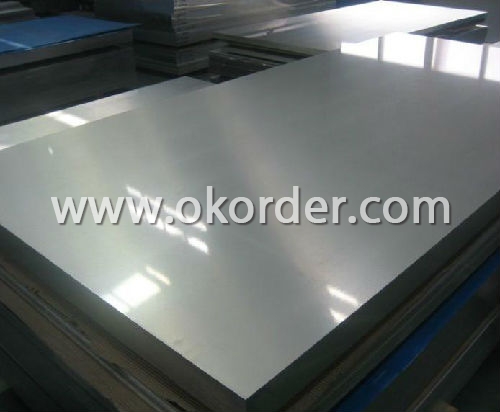
- Q: Can stainless steel strips be used in the automotive body panels?
- Automotive body panels can indeed utilize stainless steel strips. This material is widely favored in the automotive industry due to its exceptional resistance to corrosion, durability, and attractive appearance. Its high strength-to-weight ratio makes it particularly well-suited for body panels that must endure impacts while offering structural support. Moreover, stainless steel boasts remarkable heat and fire resistance, a crucial safety factor in automotive design. Furthermore, the malleability of stainless steel allows for effortless shaping and customization, ensuring design flexibility. Consequently, stainless steel strips emerge as a fitting and dependable material choice for automotive body panels.
- Q: Can 111 stainless steel strips be formed into complex shapes?
- Yes, 111 stainless steel strips can be formed into complex shapes. Stainless steel is a versatile material that can be easily bent, molded, and shaped to create intricate designs and structures.
- Q: What are the different surface treatments available for stainless steel strips?
- Stainless steel strips offer a range of surface treatments, each with its own advantages and characteristics. Let's explore some of the most common options: 1. The standard untreated surface of stainless steel strips is called Mill Finish. It has a smooth and shiny appearance, perfect for those who prefer a natural, unaltered look. 2. Another popular treatment is the Brushed Finish, also known as satin finish. This involves brushing the surface with abrasive materials to create a matte texture. It not only adds a stylish touch but also helps to conceal scratches and fingerprints. 3. For a highly reflective surface, there is the Mirror Finish. Achieved through progressive polishing with finer abrasives, it creates a mirror-like appearance. 4. If you're looking for decorative patterns, the Patterned Finish is the way to go. This treatment involves embossing, etching, or laser engraving to achieve various designs and textures. 5. PVD Coating, or Physical Vapor Deposition coating, offers a thin layer of metallic or non-metallic material applied through a vacuum deposition process. This not only provides enhanced durability and corrosion resistance but also allows for different colors or a metallic appearance. 6. Passivation is a chemical treatment that removes iron contaminants from the surface, improving corrosion resistance. It utilizes acid-based solutions to clean and neutralize the stainless steel strips. 7. Electropolishing involves the removal of a thin layer of metal using an electric current. This treatment results in a smooth and shiny surface, enhances corrosion resistance, and eliminates embedded contaminants. 8. Lastly, stainless steel strips can be coated with materials like paint, epoxy, or polymers for additional protection against corrosion, abrasion, or for aesthetic purposes. These examples showcase the diverse range of surface treatments available for stainless steel strips. The choice of treatment depends on specific requirements such as desired appearance, corrosion resistance, durability, and functionality.
- Q: Are 111 stainless steel strips suitable for automotive exhaust systems?
- Yes, 111 stainless steel strips are suitable for automotive exhaust systems. Stainless steel is a popular choice for exhaust systems due to its high resistance to heat, corrosion, and rust. The grade 111 stainless steel, also known as AISI 111, offers excellent ductility, strength, and weldability, making it a suitable material for automotive exhaust systems. It can withstand the extreme temperatures and harsh conditions that exhaust systems are exposed to, ensuring long-lasting performance and durability. Additionally, stainless steel strips are easy to shape and form, allowing for precise fabrication and customization according to the specific requirements of the exhaust system design. Overall, 111 stainless steel strips provide the necessary properties and characteristics to meet the demands of automotive exhaust systems.
- Q: Are 111 stainless steel strips suitable for chemical pipelines?
- Chemical pipelines should not use stainless steel strips with the grade 111 as they are unsuitable. The grade 111 is not recognized in standard stainless steel grading systems like AISI or ASTM. To ensure safety and reliability, it is crucial to opt for stainless steel grades designed specifically for chemical pipelines, such as 304 or 316L. These grades have exceptional corrosion resistance and are extensively utilized in diverse chemical and petrochemical industries. Employing stainless steel strips with an unidentified or non-standard grade may lead to corrosion, leaks, and pipeline system failures, thereby posing significant risks and safety hazards.
- Q: How do stainless steel strips compare to other materials?
- Stainless steel strips are highly resistant to corrosion, heat, and wear, making them a superior choice compared to other materials. They have excellent strength-to-weight ratio, exceptional durability, and are easy to clean and maintain. Additionally, stainless steel strips offer a visually appealing appearance, versatility in applications, and are environmentally friendly. Overall, stainless steel strips outperform many other materials in terms of performance, longevity, and aesthetics.
- Q: Can stainless steel strips be used in food storage containers?
- Indeed, food storage containers can utilize stainless steel strips. Stainless steel emerges as a favored material selection for these containers due to its numerous advantageous qualities. Notably, it exhibits non-reactivity, implying that it does not engage with or modify the taste, appearance, or aroma of the stored food. Moreover, stainless steel boasts corrosion resistance, endowing it with durability and longevity. On top of that, it proves effortless to clean and maintain, while effectively avoiding the retention of unpleasant odors or unsightly stains. These exceptional attributes render stainless steel strips an optimal alternative for food storage containers, guaranteeing the preservation of freshness, safety, and the prevention of contamination.
- Q: Can stainless steel strips be used in the automotive manufacturing industry?
- Yes, stainless steel strips can be used in the automotive manufacturing industry. Stainless steel is a versatile and durable material that offers numerous benefits for automotive applications. It has excellent corrosion resistance, which is crucial for components exposed to various weather conditions and road salts. Additionally, stainless steel strips provide high strength and hardness, making them suitable for manufacturing parts like fenders, exhaust systems, brackets, and trim. The material also offers aesthetic appeal due to its sleek and polished appearance. Moreover, stainless steel is easy to clean and maintain, making it an ideal choice for automotive manufacturing where hygiene and durability are essential. Overall, the properties of stainless steel make it a reliable and popular choice in the automotive industry.
- Q: Can stainless steel strips be used in the pulp and paper industry?
- Indeed, the utilization of stainless steel strips is possible within the pulp and paper industry. Stainless steel, a versatile and corrosion-resistant material, is highly appropriate for various industrial applications, including the pulp and paper sector. In the realm of pulp and paper manufacturing processes, stainless steel strips find application in the creation of diverse components and equipment. These strips can be employed to fabricate screens, filtration systems, rotary vacuum filters, and other equipment that necessitate robustness and resistance to corrosive substances like chemicals, acids, and moisture. The exceptional corrosion resistance properties of stainless steel render it an optimal selection for the pulp and paper industry. This industry, characterized by the presence of harsh chemicals and high humidity, can lead to swift deterioration of equipment composed of alternative materials. By utilizing stainless steel strips, manufacturers can ensure the longevity of equipment, minimize maintenance expenses, and enhance production efficiency. Moreover, stainless steel is renowned for its hygienic properties, rendering it suitable for applications in the production of food-grade paper products. Additionally, it is effortless to clean and maintain, a trait of utmost importance in industries where cleanliness and hygiene are of paramount significance. To summarize, the use of stainless steel strips in the pulp and paper industry is indeed feasible due to their corrosion resistance, strength, and hygienic properties. Their employment can enhance the performance, durability, and efficiency of equipment, thereby contributing to a more sustainable and productive manufacturing process.
- Q: Can stainless steel strips be used in water treatment plants?
- Yes, stainless steel strips can be used in water treatment plants. Stainless steel is known for its corrosion resistance, making it suitable for applications in water treatment plants where it will be exposed to water and various chemicals. It provides durability and long-lasting performance, making it an ideal material for components and structures used in water treatment processes.
1. Manufacturer Overview
| Location | Shandong,China |
| Year Established | 2005 |
| Annual Output Value | Above US$5.3 Million |
| Main Markets | Europe, China |
| Company Certifications | ISO9001:2000 |
2. Manufacturer Certificates
| a) Certification Name | |
| Range | |
| Reference | |
| Validity Period |
3. Manufacturer Capability
| a) Trade Capacity | |
| Nearest Port | Tian Jin |
| Export Percentage | 30% |
| No.of Employees in Trade Department | 40 People |
| Language Spoken: | English;Chinese |
| b) Factory Information | |
| Factory Size: | Above 50,000 square meters |
| No. of Production Lines | Above 8 |
| Contract Manufacturing | OEM Service Offered;Design Service Offered |
| Product Price Range | Average |
Send your message to us
AISI 201 Stainless Steel Plate
- Loading Port:
- China Main Port
- Payment Terms:
- TT or LC
- Min Order Qty:
- 1 Ton m.t.
- Supply Capability:
- 2000 Tons Per Month m.t./month
OKorder Service Pledge
OKorder Financial Service
Similar products
Hot products
Hot Searches
Related keywords
